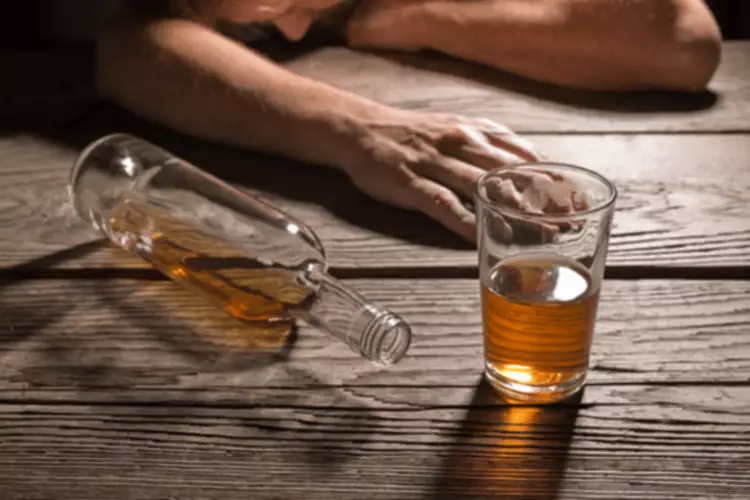
Those who live in these houses rent rooms indefinitely and live a life in accordance with their responsibilities, like work and school. A daily routine centered on healthy habits—like proper nutrition, exercise, and sleep — provides stability. The support element comes from a wide variety of sources, such as mutual-help groups (like Narcotics or Alcoholics Anonymous), friends, and family, who offer encouragement and a sense of community. Indiana has many different options when it comes to sober living environments.
- This guide explores the benefits of sober living, how to do it effectively, and why it is a cornerstone of recovery.
- We do not receive any fee or commission dependent upon which treatment or provider a caller chooses.
- MCD stock is up just 9% since late 2022, while YUM stock is up a meager 1%.Meanwhile, healthier fast-food chains like CAVA (CAVA) and Sweetgreen (SG) have stolen the show.
- These homes offer routines, rules, and support from others on the same path, helping residents move from treatment to independent life.
- As the others in the house are in the same situation, they can be authentic without having to explain their addiction or recovery needs.
Speak to an Aware Recovery Specialist now! ( 292-7372
These homes not only reduce the risk of relapse but also equip residents with the skills and confidence needed to build a fulfilling life in sobriety. Sober living houses have developed over time to provide safe, structured spaces that promote accountability and personal responsibility. This growth has created different types of sober living homes, each designed to meet specific recovery needs and levels of independence. When considering the journey to sobriety, the path doesn’t simply end once an initial treatment or rehab program is completed.
What rules and structures are typically found in sober living homes?
Our Massachusetts PHP programs typically last 6 hours each day, up to 6 days a week. During this, clients participate in a combination of evidence-based therapies, including individual, group, and family therapy. Avenues NYC sober livings are comfortable, casual, safe environments where Sober living home residents can forget about the stressors of the outside world and focus on their own growth.

What Rules Apply in a Sober Living House?
- Residents who adhere to house rules and engage actively in community recovery efforts often benefit the most.
- Scientifically, numerous studies have underscored the efficacy of sober living houses in promoting long-term sobriety.
- All sober houses have a zero-tolerance policy regarding the use of drugs or alcohol.
- We partner with most major insurances, enabling you to access premier therapy services.
A more extended period in an SLH means more time under a system of checks and balances. This consistent accountability is key for many in avoiding potential relapses. Watch the video to see what it is like living in a sober house and residents of a sober house engage in fun activities. Prices vary What are sober living homes depending on location, living arrangements, and program offerings.

Victims were enrolled in the American Indian Health Program through the state’s Medicaid Agency, the Arizona Health Care Cost Containment System (AHCCS). The homes billed AHCCS for patient care in excess of $1,000 per day per patient. The guiding goal is to create a safe, supportive community that encourages sobriety and helps the transition to a substance-free life. Transitional housing often fosters strong psychological bonds among residents, leading to long-term support networks available in moments of risky behaviors or difficult life decisions. Without a stable drug- and alcohol-free environment, even motivated individuals can struggle to maintain sobriety.

- These homes focus on creating emotional stability for residents through established routines, including regular therapy sessions and peer support engagements.
- At a sober living home, you can benefit from a house manager who will oversee operations, and you can count on other residents for help as you move toward independent sober living at home.
- First, if you’re recently leaving a rehab stay or have just wrapped up an outpatient program, a sober living facility may provide you with the structure you need.
- Halfway houses date back to the 1830s when they housed children and adults that had committed crimes or had been released from prison.
The time spent in a sober-living home depends on a number of factors including strength of recovery from addiction, progress on clinical milestones and the personal living situation at home. A minimum stay of three months is recommended, but many benefit from a longer stay for sustained sobriety. Lastly, halfway houses are often owned or sponsored by the state, while most sober-living houses are owned privately or by treatment facilities that want to provide continuing support for their patients. Living in a sober living home comes with a range of costs that can vary significantly based on several factors, including location and amenities.

Learn to live a Sober, Vibrant & Substance-Free Life
This may involve attending outpatient therapy sessions or engaging with https://ecosoberhouse.com/ peer support group meetings. Residents will also be expected to share household chores and responsibilities. Sober living homes do not provide addiction treatment, and these communities are not a substitute for rehab. Sober living homes play a pivotal role in bridging the gap between structured inpatient treatment and independent living for individuals recovering from substance use disorders.
Powerball Can Lead to Gambling Addiction

Sometimes, sober living houses also act as a stand-alone approach for substance misuse problems, meaning that someone will go straight there without first attending a residential treatment center. If you or a loved one has completed their stay at an addiction treatment center and detoxed effectively, it’s time to take the next step towards sustaining sobriety. Losing the accountability that the structure of a treatment program provides, you may worry that your recovery could be impeded.
In-home addiction treatment that really works
Our program, rooted in the 12-step methodology, emphasizes values like honesty, integrity, accountability, responsibility, and service. Platforms like GoFundMe let you share your recovery journey and goals, enabling family and friends to contribute. While it might not cover all costs, every contribution helps inch you closer to your recovery goals.

